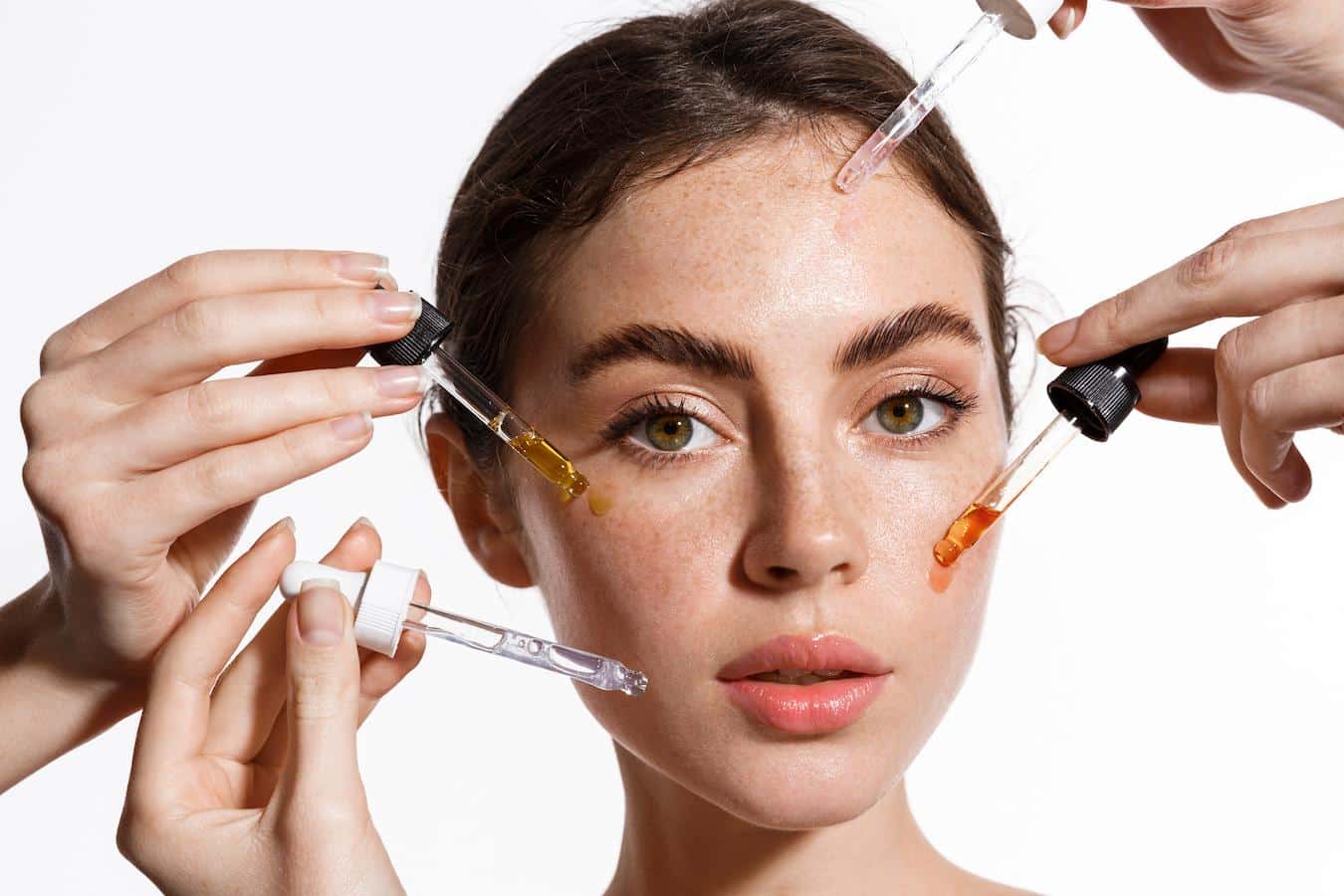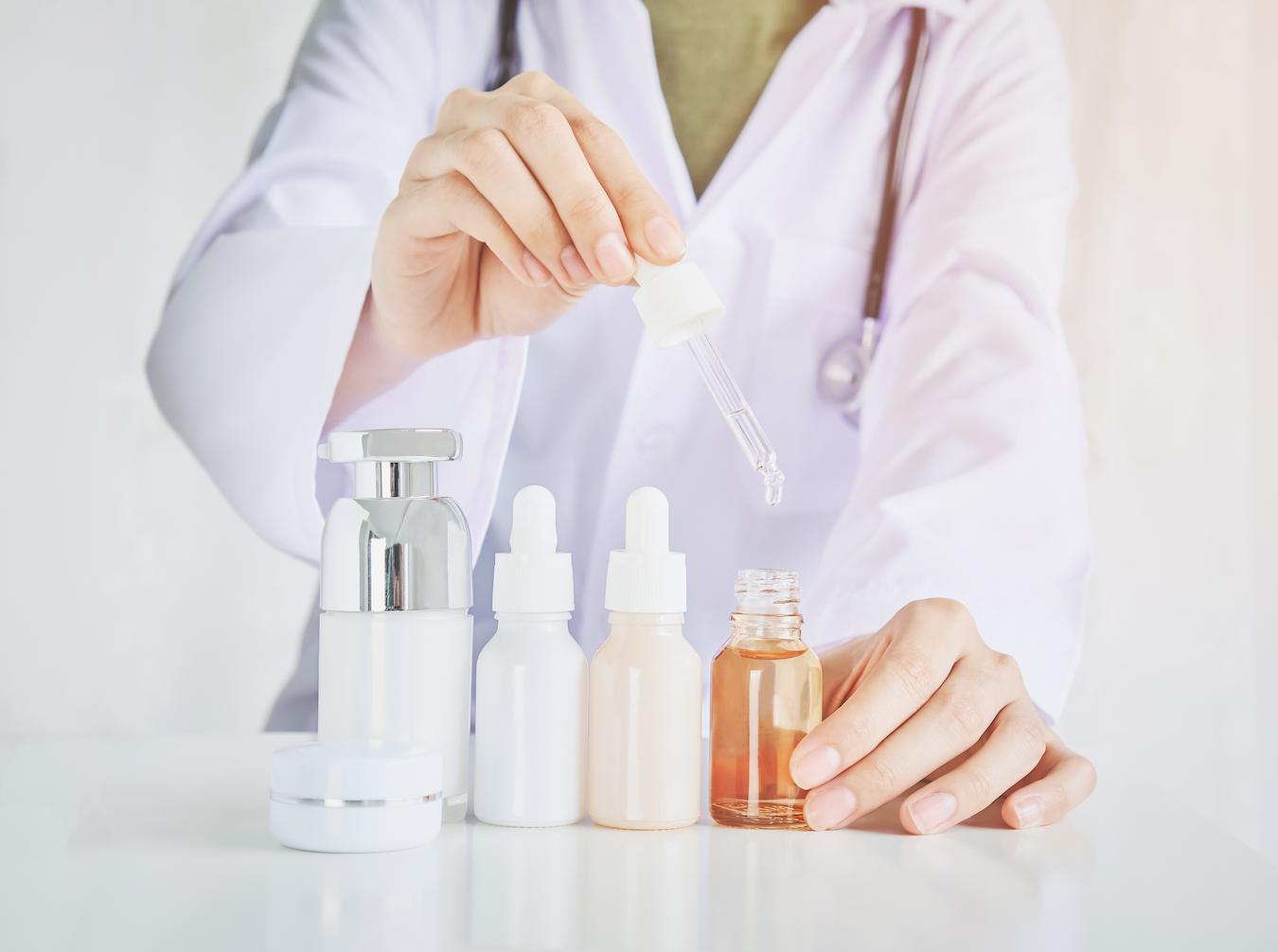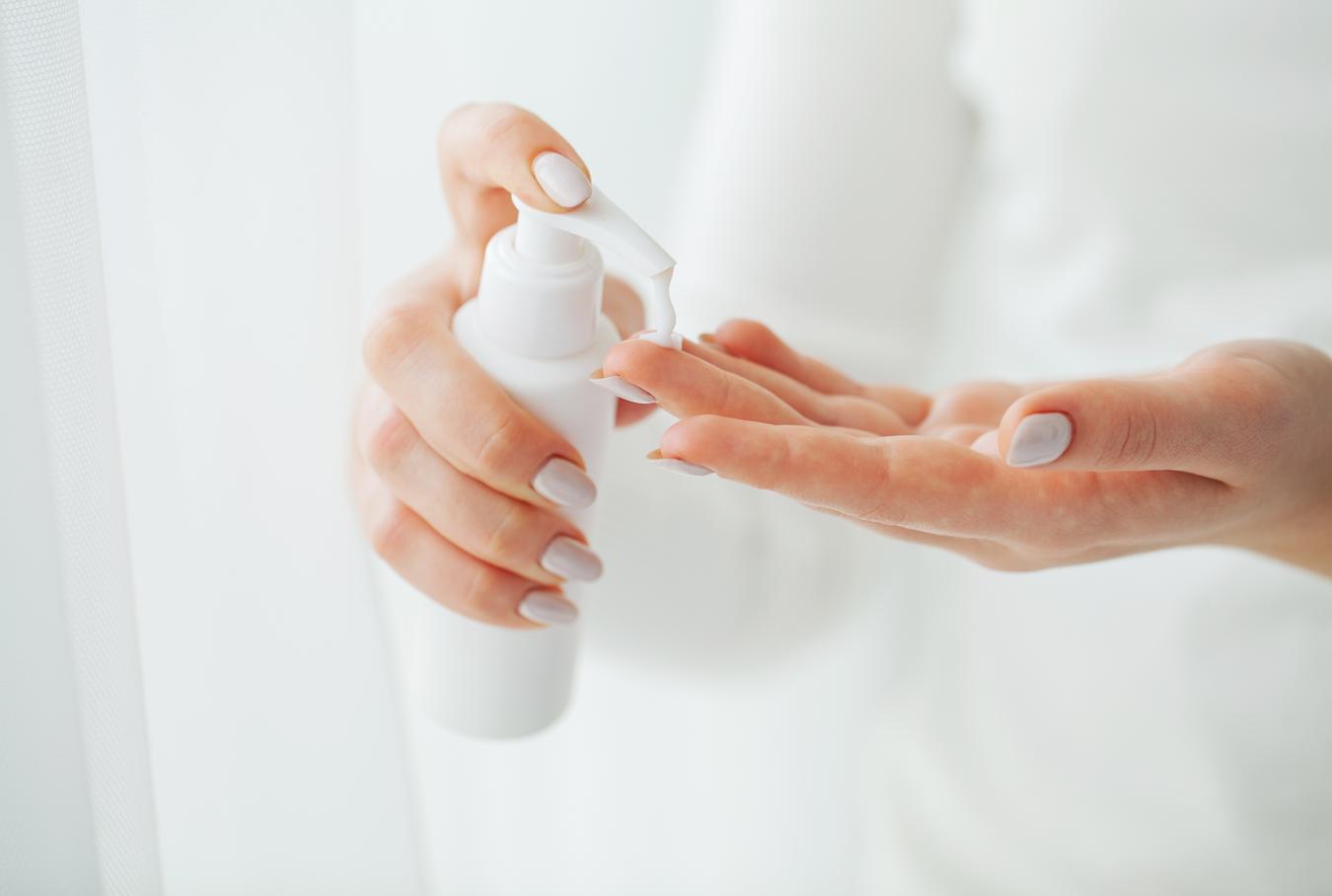What To Pair With Glycolic Acid

Even at the best of times, layering skincare ingredients may sound overwhelming, especially when you are a beginner. With new products, textures, and ingredients making their grand entry every week, determining what might work for you and what won’t is a task in itself.
If you are a beginner, it’s obvious that you will be apprehensive about adding acids to your skincare routine due to an underlying fear of side effects and burns.
This guide will help! Read on to learn all about what is safe to pair with skincare products that contain glycolic acid.
See Related: A Guide On How To Get Clear Skin
ACIDS AND THEIR IMPACT ON SKINCARE
While it may seem like acids have just appeared out of nowhere in the skincare industry (and even in your skin care routine), acids have actually been essential to skincare since ancient times.
Acids treat common skin issues and concerns such as pigmentation, acne-prone skin, skin hydration, dryness, fine lines and wrinkles, clogged pores, collagen production, and skin cell turnover.
The first step in determining which acid is going to work for you is to narrow down your skin tone and corresponding issues. The second step is determining which products are best when combined with glycolic acid.
Glycolic acid is a popular alpha hydroxy acid, popularly known as AHA helps with exfoliation and pigmentation. It also offers anti-aging benefits which improve skin texture and assist in boosting collagen production.
It is widely used in serums, cleansers, chemical exfoliants, toners, and cleansers, and is suitable for all skin types, including oily skin. However, if you are prone to sensitive skin, it is always best to consult with your doctor or a board-certified dermatologist before use.
USING GLYCOLIC ACID FOR YOUR SKIN ISSUES
Glycolic acid benefits are many! It is a popular chemical exfoliant that should be a part of your daily skincare routine.
Glycolic acid products have immense skincare benefits ranging from skin brightening to removing dead skin cells, treating blemishes and dark spots, improving skin texture, and balancing an uneven skin tone.
Glycolic acid can also be used for enhancing other skin treatments like phytic acid to help in improved penetration and treat hyper-pigmentation. Plus, it will help remove dead skin cells.

When you are not sure which approach is best when layering acids, first learn what works best before you apply (and start by reading this blog). Go slow, and use each of the ingredients at different times to avoid inflammation or skin irritation, especially if you have sensitive skin.
Since glycolic acids are in fact acids, it’s not available in more than 30 percent concentration in OTC products. Your dermatologist may use products with higher strengths for chemical peels based on your skin type, or if you have congested skin. Here are a few general skincare tips:
- Glycolic acid face washes can be used daily
- Peels should be used once every 2 to 4 weeks
- Facial masks may be used twice a week
- Active serums are to be used twice a week in the beginning; gradually they can be increased to every other day.
It might take about four to six sessions of consistent application in your skincare routine over several weeks to notice improvements on your skin’s surface. But over time, you’ll surely notice a brighter complexion, a smoother complexion, and generally more luminous skin.
Note: You may experience a light tingling sensation along with redness of the skin when you start to use glycolic acid products. But this is not indicative of any harm to your skin.
PAIRING GLYCOLIC ACID WITH OTHER INGREDIENTS
When it comes to pairing acids, the trick is to pair ones with exfoliating properties with those that increase skin hydration. You have to ensure that both have hydrating blends.
If you are trying to use two exfoliating acids, and if they are not mild, you run the risk of drying out your skin. The general rule of thumb is to refrain from mixing BHAs, and alpha hydroxy acids, with retinol.
All of them have exfoliating ingredients which can be harsh on the skin when used together.
#1. HYALURONIC ACID:
Yes, both ingredients are acids. However, they are skincare products that work perfectly together. To get the best of both worlds, you have to use them correctly.
Once you apply glycolic acid, you will notice that hyaluronic acid is better absorbed. But if you see any skin tightness along with mild sensitivity, try applying hyaluronic acid first.
When you apply this method, the skin barrier is optimally hydrated and better equipped to soak any moisturizing element surrounding the skin. As a result, moisturizers or other formulations are readily absorbed giving a great boost of hydration.
Many people consider the lines of the skin as premature signs of skin aging. But when those lines are treated with hyaluronic acid and glycolic acid, the skin can reap the benefits of both as their hydrating effects keep the skin plump and free of fine lines.
You may use these two ingredients separately or go for a product that contains the power of both active acids such as a hydrating serum.
#2. NIACINAMIDE:
You can use glycolic acid and niacinamide together with ease. In fact, you will find many products with this specific formulation. But determining how and when to use these two products depends on your individual skin goals.
Using niacinamide can aid in improving the overall skin appearance and complexion. With regular use, you will notice any discoloration starting to fade and the outer layer becoming smoother and more even.

It can also support the natural protective barrier of the skin and bring down inflammation and irritation. It’s a great way to help your skin become bright and free of damage signs.
You may introduce a single product such as a glycolic acid toner or a glycolic acid serum containing both ingredients. Start with a product that has the thinnest consistency.
Both the ingredients are water-based and you can only find them in water-based serums and moisturizers. But be weary of how the skin reacts to this combination and adjust the frequency of use accordingly.
If you don’t experience any sort of reaction, then you may use this combination daily,
#3. VITAMIN C
Vitamin C plays a critical role in the production of collagen, and it maintains any collagen already present in the skin. By combining glycolic acid and vitamin C, you can reap the benefits of both ingredients in your daily routine. If you are looking for the most stable yet effective skin-transforming duet, you can swear by this pair in your skin care.
If you are using the products separately, it’s recommended to start with glycolic acid first, then vitamin C products. Glycolic acid will help remove the dead skin cells first while vitamin C will help keep the pores open.
Now if you apply vitamin C, you should go for a product that has a more active form biologically. The safest option is 10% ascorbic acid which starts working on the skin right away.
Glycolic acid helps vitamin C to penetrate the deeper layers of the skin without having to work around the barriers of dead skin cells. If you can follow these steps closely and remain consistent in your efforts, you will likely see visibly clear skin within four weeks.
You may start using the products thrice a week so that your skin has time to adapt.
#5. SALICYLIC ACID
Both glycolic acid and salicylic acid are great exfoliators and help in peeling dead cells off the skin. Most importantly, they can target different skin layers which indicates that they are effective when used on their own. While glycolic acid works on the outer layer, salicylic acid penetrates the deeper layers of the skin so that you can get rid of dead cells.
If you wish to combine glycolic acid with salicylic acid, you must ensure that they are used in the right concentration. That’s because both the ingredients are highly powerful and are active peeling and exfoliating agents. You can use them together but it’s difficult to get them in a combination that will not harm your skin.
Salicylic acid is derived from willow bark and wintergreen leaves. It is oil-based and capable of going deeper into the fat or lipid layer of the skin.
This way, it can bring down any inflammation due to pimples and acne. The percentage of salicylic acid required for skin peeling should be less than 10 percent. If it’s higher than this, it may cause skin damage, irritation, and skin burns.
#6. BHAs
Yet another effective exfoliating agent, beta hydroxy acid can be paired with glycolic acid to illume your skin. With that being said, both ingredients perform different functions and are different in structure as well.

BHAs are Beta Hydroxy Acids derived from different kinds of barks. While both glycolic acid and BHAs are exfoliators, BHAs are comparatively stronger.
They can penetrate the deeper layers of the pores and can unclog them. This also means that you have to give your skin more time to adjust to the ingredient. So there’s nothing to worry about if you see your skin peeling or even a certain level of flakiness.
Strong and deep acids can be effective in exfoliating and treating underlying issues of pigmentation and acne scars. But make sure that these procedures are conducted under an expert’s supervision. Before you start pairing any ingredient with glycolic acid, make sure you conduct a patch test beforehand.
Bonus: What Is A Lip Exfoliator?
CAN YOU USE RETINOL WITH GLYCOLIC ACID?
There is a common misconception that using retinol and glycolic acid would cancel out the benefits of each product. But experts are saying otherwise.
A number of studies have shown that combining retinol with glycolic acid can effectively treat active acne as well as acne scars. With regular use, they can help in reducing the need for other scar treatments.
The reason why dermatologists recommend not using them together is that they are both strong enough to irritate your skin. So, you should never mix glycolic acid and retinol or apply them at the same time.
Retinol is highly effective in treating skin aging. Since it works by replenishing the skin cells in place of clearing away dead skin cells, you will notice visibly clear skin in a short time.
Moreover, the appearance of wrinkles and fine lines is also minimized. If your skin has suffered sun damage, retinol is the best solution. It boosts cell turnover and aids in unclogging the pores responsible for acne.
To be on the safer side, start with using retinol once a week and observe how your skin reacts to it. When everything goes great, you can increase its usage to two to three times a week.
Gradually incorporate glycolic acid into the routine. Make sure you use it on the days on which you are not applying retinol.
This way you can use retinol and glycolic acid on alternative days. Just make sure you are not using any other active ingredients or AHAs with glycolic acid.
HOW TO USE GLYCOLIC ACID TO MAXIMIZE ITS BENEFITS
#1. APPLY IT AT NIGHT
Regardless of the glycolic acid product you are using, it’s better to apply it at night only. This part is extremely critical because glycolic acid along with every other AHA turns the skin more sensitive to ultraviolet rays.

Thus it’s best to incorporate it into your night-time routine. And also, use sunscreen with SPF 50 to shield your newly developed skin.
#2. ALLOW YOUR SKIN TIME TO ADJUST
When you start using glycolic acid, it’s common to notice redness and a tingling sensation. Over time, the skin starts adjusting to it and you can use it more frequently.
If you notice unexpected peeling or intolerable irritation, try using another product with a lower concentration of glycolic acid.
#3. STEER CLEAR OF YOUR EYES, LIPS, AND MOUTH
Glycolic acid works most effectively when you work it on your entire face – except the eyes, lips, and mouth, of course. As it dissolves dead skin cells with an even application all over the face, you can ensure the desired exfoliation.
This aspect is true for all the products you pair with glycolic acid. Make sure you are taking only a pea-sized amount since any more can be detrimental to your skin, especially if you are a beginner.
#4. APPLY A WATER-BASED MOISTURIZER & SUNSCREEN
Last but not least, never forget to apply a water-based moisturizer twice daily and sunscreen every single day. Believe it or not, these two humble products can make or break your entire skincare regimen.
CONCLUSION
Did you know that Cleopatra used the lactic acid naturally present in milk to exfoliate her skin? European women additionally rinsed their skin with stale wine which contains malic acid and tartaric acid.
These acids are active ingredients capable of addressing a number of skincare issues based on the strength and molecular size of the acid. And glycolic acid is no exception to this, especially when you pair it with the right ingredients.
Keep Reading: How To Fix Dehydrated Skin
—
For over 60 years, Viviane Woodard has represented “The Purity of Skincare”. We are the leading beauty brand for skin care products and promote the importance of good skin hydration. Follow us on Facebook, Instagram, Twitter, and Pinterest for skin care tips, product discounts, and more.
